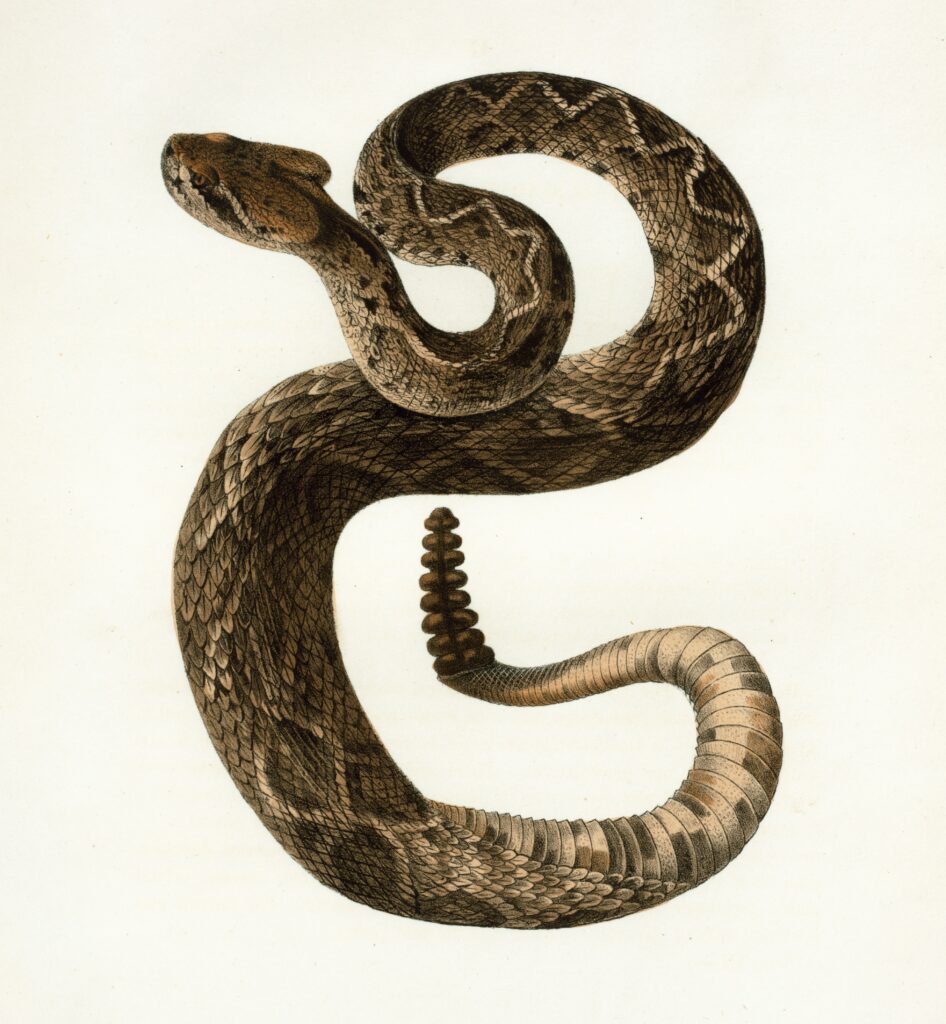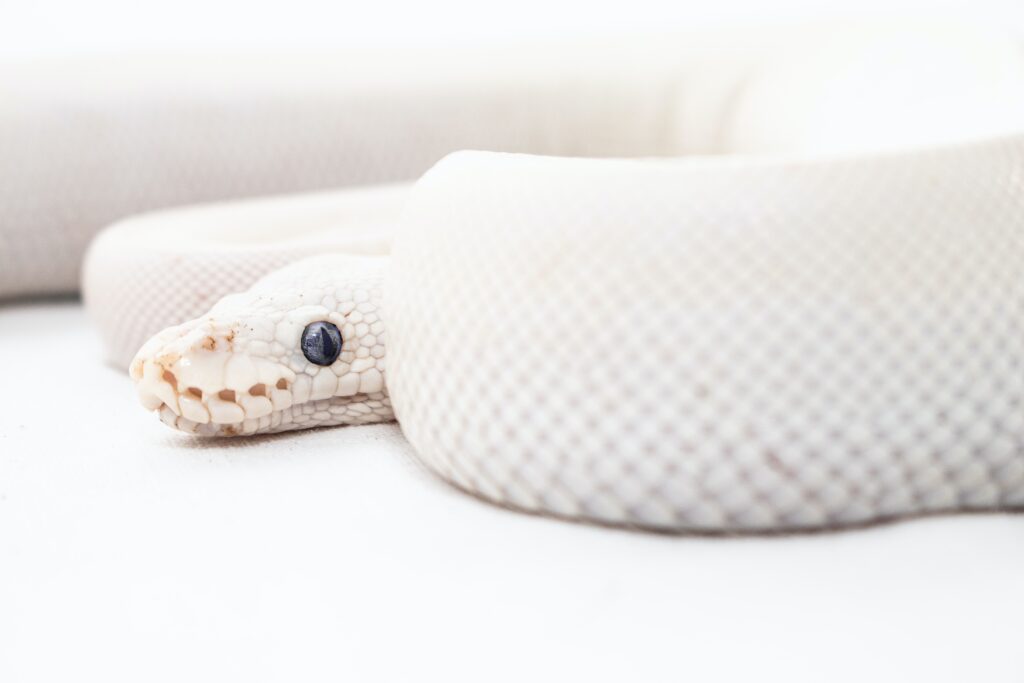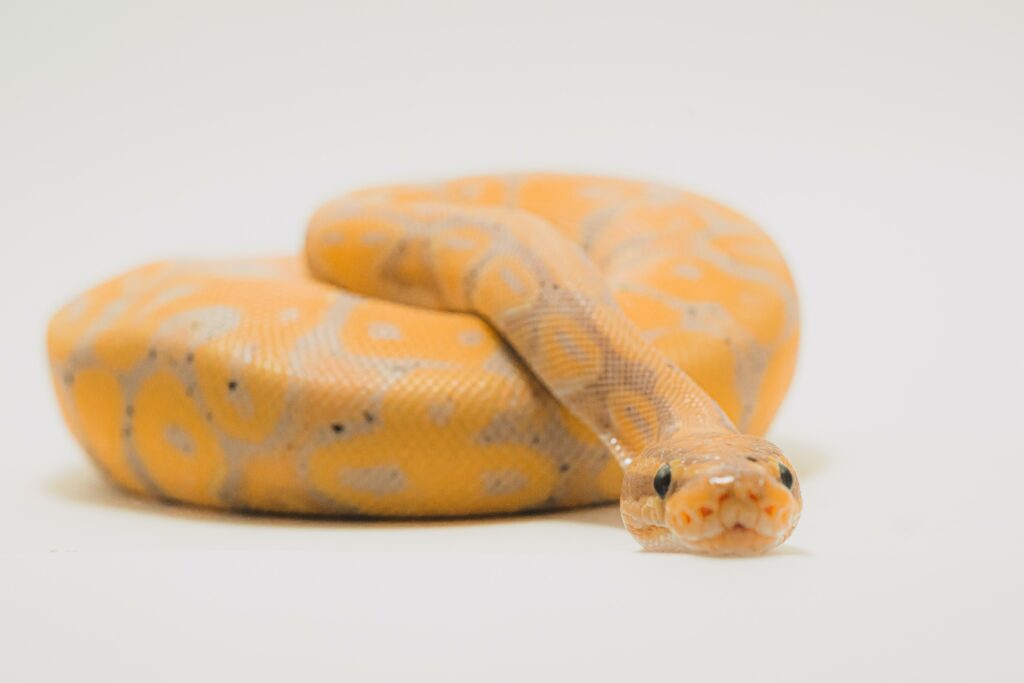Are you going on a camping trip and are a tad bit worried about encountering a snake? Well, fear not because we can show you how to tell if a snake is poisonous.
Snake bites are a common occurrence among people who enjoy outdoor life. Therefore knowing how to tell if a snake is poisonous is vital.
The world is home to four distinct kinds of venomous snakes: rattlesnakes, copperheads, cottonmouths (sometimes referred to as water moccasins), and coral snakes. The Rattlesnake is the most venomous snake of the four.
More than 70,000 people get bitten by one of these snakes every year. Therefore, it is not advisable to handle the snake or kill it. Because doing so can lead to the person being on the receiving end of a snake bite. In the event that a snake bites you, get medical attention as soon as possible.
In order to evaluate the level of risk you face, it is necessary to be familiar with the characteristics that separate potentially dangerous snakes from non-venomous snakes.
Suppose you do see a snake, then you should immediately leave the area and consider calling a wildlife specialist who will be able to aid you in identifying the kind of snake you have seen. In the meantime, this is how to tell if a snake is poisonous.
The 4 Most Common Venomous Snake Species
Even though there are 21 distinct varieties of venomous snakes, the vast majority of the species you need to worry about are only four. The following species fall within the category of common venomous snakes:
RattleSnake
The rattlesnake is undoubtedly the species of venomous snake that has gained the most significant notoriety and recognition. And while you can find 33 different species of rattlesnakes in the region of North and South America, most of the time, you’ll find them in dry areas of the continent.
The length of these snakes, which can reach up to 6.6 feet, makes them the longest on our list. The rattle can be on the tip of the tail, producing a buzzing sound when the snake shakes its tail. And this is one of the rattlesnakes’ most recognizable characteristics. Most rattlesnakes have black spots or diamond-shaped markings along their backs, which contrast with a lighter color, which may be green, yellow, pink, orange, or red; however, the color of a rattlesnake’s body can change depending on the environment in which it lives.
Despite what most people think, rattlesnakes are rather timid animals that give out a variety of warning signals before they strike.
Water Moccasins
The remarkable whiteness of these semi-aquatic snakes’ lips is where their popular name, cottonmouth snakes, or water moccasins, comes from. However, people mainly refer to them as water moccasins.
The length of a water moccasin may vary from 24 to 48 inches, and they have a large body in proportion to their enormous head. So even though this venomous snake is common across the Southeast, the color of each unique specimen may vary greatly depending on where you find it.
They might be wholly brown or completely black, with dark lines slicing through the middle of a brown or yellowish body. Adult snakes often maintain a darker hue than their more vibrantly colored juvenile counterparts.
You can almost always find Cottonmouths close to water, and this proximity is most prevalent in wetlands, swamps, and floodplains.
In contrast to many of the non-venomous water snakes with which they are sometimes confused, water moccasins are more aggressive and will hold their ground when confronted. And this is one reason why water moccasins are sometimes confused with copperheads.
Copperheads
Copperhead snakes have thick bodies and can reach lengths between 24 and 40 inches. These snakes have tan bodies with features that resemble an hourglass running down the length of the body, enormous triangular brown heads with two little spots on top, and eyes with slit pupils.
You may find Copperheads across the eastern and central regions of the United States. These snakes like suburban areas, dry, rocky hillsides, and woodland locations to call home. You may observe them moving about throughout the day and the night since they are active at both times. The venom of a copperhead snake is not very potent, and deaths caused by its venom are rare.
Coral Snakes
These snakes are among the smallest poisonous snakes on this list, growing to 18 to 30 inches, yet you should never take them lightly. The color is the property that most strongly distinguishes it from other things.
Bands of varying colors may be seen all over the body, including red, black, and yellow. You may use the phrase “red on yellow, you’re a dead fellow,” in this context. Use the phrase “Red on black, you’re fine, Jack” as a fast and easy method for identifying common copycats.
Although they often live near water sources in the coastal areas of the South part of the US, you seldom see these snakes since they spend much of their time underground. However, they will clearly warn people not to go any closer by lifting their heads and curling the tips of their tails when threatened.
How to Spot a Poisonous Snake
 Spotting a poisonous snake would be challenging to do promptly during an emergency. But there are several techniques to determine whether or not a snake is dangerous.
Spotting a poisonous snake would be challenging to do promptly during an emergency. But there are several techniques to determine whether or not a snake is dangerous.
Poisonous snakes often have thick bodies, heads in the form of triangles, and pupils resembling cats. Other venomous snakes fall under the pit viper umbrella, such as copperheads and rattlesnakes. Pits located just behind the snout of these snakes allow them to detect their prey more easily. The fact that it is difficult to recognize from a distance does not change the fact that it is a distinguishing feature.
If you attempt to determine whether or not a snake is venomous just based on its color, you risk making a mistake. Snakes use color either to adapt to their environment or as a defense mechanism against potential enemies. In addition, certain types of snakes have distinctive markings that might help you recognize them more quickly.
Learn the Glaring Exception: The Coral Snake
The significant characteristics of this snake are an absence of sensing pits, wide eyes, and slender skulls. And tell them apart in two distinct ways; nonetheless, it is possible to confuse them with several other snakes that seem less plausible, such as milk snakes and scarlet king snakes. Nonetheless, confusing them with other snakes that seem less likely is possible. And these are milk snakes and scarlet king snakes.
The first example is a charming little rhyme that starts with the words “Red versus yellow: kills a person.” “Jack is a safe bet compared to red and black.” The second strategy is to look for a dark nose, which is the characteristic that God chose to single out as being unique to coral snakes.
Snake Biology and Their Natural Environment
How snakes behave may be a helpful clue in determining their species. The many species of snakes each exhibit their own unique set of behaviors. As a consequence of this, it may be challenging for a beginner to retain these differences.
Regardless, behavior observation is an essential component that assists wildlife professionals in determining the most effective courses of action. Whenever animals and humans come into direct contact with one another. One of the most notable behavioral features is the rattlesnake’s ability to make rattling sounds. When you make a rattlesnake feel as though there is a treat, it may generate a loud clicking sound. They do this by shaking the rattles that are attached to their tails. Many see it as a warning. Be careful that this is not a foolproof method of warning since not all rattlesnakes have rattles on their tails.
Keeping an eye out for nesting habits and gathering information about the surrounding environment may be helpful in the identification of snakes. To ascertain whether they are poisonous or not. Cottonmouths, you may find, for example, in water or the immediate vicinity of water. In light of this, it is possible to come across cottonmouths in the area if there is a nearby pond or marsh. However, this is dependent on the specific geographic location. In a manner comparable to this, copperheads make their homes in wetlands close to rivers and forests in many parts of the globe.
Identify Venomous Snakes by Their Head Shape
A non-venomous snake has a skull that is more rounded in shape. And venomous snakes have more triangular heads.
Coral snakes, cottonmouth snakes, copperhead snakes, and rattlesnakes are all examples of venomous pit vipers. These snakes have holes or pits on their skulls, indicating they are venomous. On the snout of each snake, you must observe the two pits. In these openings, snakes can detect the infrared radiation given off by their prey.
It may be difficult to detect from a safe distance if a snake has pits. Thus, you might consider employing a wildlife specialist to assist you in identifying the snake. And if necessary, remove it, even when you can kill the snake and remove the head. You should use caution while investigating the area and avoid touching the head of the snake.
You might still be in danger. It could still bite or attack you as the snake is a reptile. And we know that reptiles can live even if you detach a salient part of their body. Take lizards, for example; they continue to live and regrow their tail even if you detach them from the tail.
Snake Coloring
 Even though there are only four main types of venomous snakes, each kind has multiple subspecies that vary in size and color to better match their environment. Some of these subspecies even have unique names.
Even though there are only four main types of venomous snakes, each kind has multiple subspecies that vary in size and color to better match their environment. Some of these subspecies even have unique names.
Therefore, using color alone to differentiate between venomous and non-venomous snakes could not be accurate. For example, the scales of venomous coral snakes and non-venomous scarlet king snakes have a banded pattern. Consisting of yellow, brown, and black colors.
The Scarlet king snake is a non-venomous species. Coral snakes have red bands that touch yellow, while scarlet king snakes have red bands that connect to black bands. So you differentiate the two types from one another in this way.
Check the Pupils
Looking at the snake’s pupils is another technique to tell venom from non-venomous snakes.
Venomous snakes tend to have larger pupils than non-venomous snakes. Non-poisonous snakes have round pupils, but venomous snakes have pupils that are vertical, narrow, and black pupils.
These pupils resemble a cat’s eyes. The fact that you can only see the pupils up close makes this diagnostic method dangerous. And this is despite the fact that they may indicate that a snake is deadly.
Key Takeaways!
If you love outdoor life, it is crucial to know how to identify venomous snakes. Not only to avoid them but to understand how to treat snake bites in the event of an attack.
Snakes can be dangerous creatures; however, some are harmless snakes. There are certain venomous snakes; if you know which ones they are and can identify them correctly, you are good to go!





